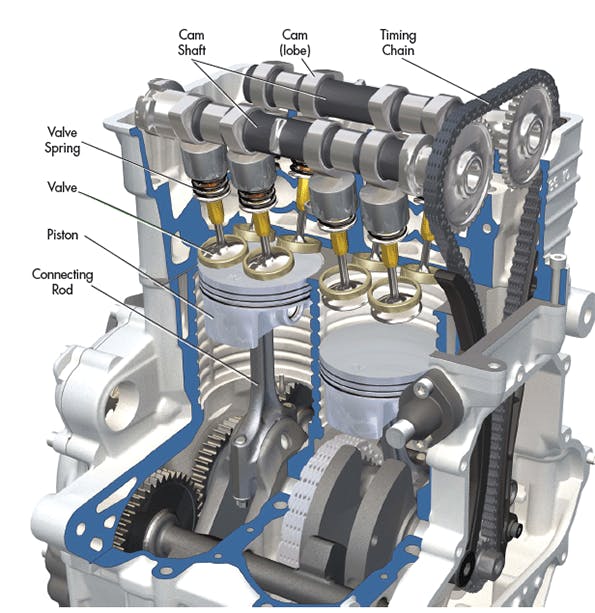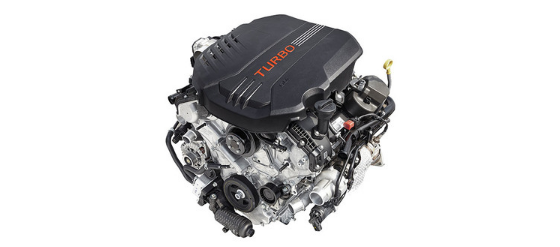Discover Engines for Africa Conveniently at Our Convenient Automobile Components Store
Discover Engines for Africa Conveniently at Our Convenient Automobile Components Store
Blog Article
The Mission for Ultimate Driving Power: Examining the Pinnacle of Engine Efficiency and Technological Innovations in the Automotive Sector
In the realm of automotive engineering, the search of maximum driving power has actually been a ruthless mission that has unfolded through the advancement of engine style and the integration of advanced technologies. From the thorough workmanship of burning engines to the fast innovations in electric propulsion systems, the automotive sector stands at the cusp of a brand-new period identified by unprecedented performance capabilities. As engineers and researchers delve much deeper right into the worlds of computational fluid characteristics and explore innovative fuel modern technologies, the horizon of possibilities increases exponentially. Remain tuned as we decipher the complex tapestry of technical breakthroughs that are shaping the future of auto power and efficiency.
Advancement of Engine Design

In addition, the combination of turbocharging and turbo charging innovations has reinvented engine layout by boosting power without considerably increasing engine dimension. These forced induction systems press the intake air, permitting even more fuel to be combusted, thus generating greater power result from a smaller engine. This improvement has actually been especially vital in improving the efficiency of smaller variation engines while preserving fuel effectiveness standards.

Performance-Enhancing Gas Technologies
The implementation of innovative gas modern technologies has actually significantly added to boosting engine efficiency in modern cars. From typical gas and diesel to innovative biofuels, artificial gas, and hydrogen, the auto field is observing a change in fuel alternatives. Biofuels, originated from renewable sources like algae, corn, or sugarcane, deal minimized exhausts and enhanced engine performance. Artificial fuels, generated through chemical procedures, provide high octane scores, improving power output. Hydrogen gas cells, although still in the onset of adoption, show terrific promise because of their zero-emission nature and capacity for high efficiency. Furthermore, fuel ingredients and detergents are being formulated to clean engine elements, maximize burning, and reduce rubbing, thereby boosting total lorry efficiency. With recurring research study and growth, the pursuit for the supreme driving power proceeds, as engineers aim to unlock the full possibility of performance-enhancing fuel modern technologies in the vehicle market.
Advancements in Electric Propulsion
Substantial strides in electrical propulsion innovation have actually reinvented the vehicle sector, leading the way for a brand-new era of sustainable and reliable transport. Electric vehicles (EVs) are acquiring appeal because of their environmental advantages and developments in battery modern technology, allowing longer driving arrays and much shorter charging times. Manufacturers are investing heavily in r & d to improve the performance of electric propulsion systems, concentrating on increasing power outcome, enhancing power efficiency, and lowering general weight.
One notable innovation in electric propulsion is the growth of advanced electrical motors that provide greater torque and power density, causing enhanced acceleration and total driving performance. In addition, redirected here regenerative stopping systems have been improved to record and store energy throughout deceleration, further increasing the efficiency of EVs.
Moreover, the combination of wise modern technologies, such as artificial intelligence and predictive analytics, is optimizing the administration of electric propulsion systems, guaranteeing ideal efficiency under different driving problems. These improvements in electrical propulsion are improving the automotive landscape, driving the sector towards a more sustainable and amazed future.
Influence of Computational Fluid Dynamics
With developments in electrical propulsion pressing the boundaries of automotive innovation, the combination of Computational Fluid Characteristics is playing an essential role in optimizing wind resistant performance and improving total effectiveness in car style. Computational Fluid Dynamics (CFD) involves making use of computer system simulations to analyze the flow of air around a lorry, allowing designers to predict exactly how style modifications will affect the rules of aerodynamics without the need for expensive physical models. By accurately modeling airflow patterns, CFD enables the improvement of car forms to minimize drag, improve air conditioning, and boost stability.
CFD allows designers to optimize airflow around parts such as radiators, engine bays, and wheel wells, contributing to enhanced performance and overall driving experience. In final thought, the combination of Computational Liquid Dynamics represents a considerable step forward in the mission for utmost driving power and efficiency in the automotive market.
Future Trends in Engine Technology
In the vibrant landscape of automobile engineering, advanced improvements are forming the future trajectory my link of engine technology. The future of engine style is noted by a solid focus on efficiency, performance, and sustainability. Manufacturers are significantly concentrating on developing engines that not only supply high power results but also focus on ecological duty by decreasing discharges and improving fuel performance.
One popular trend in engine innovation is the rise of electrification. Hybrid and electrical powertrains are acquiring grip as sensible alternatives to typical combustion engines. These modern technologies use the capacity for considerable decreases in carbon exhausts and increased energy effectiveness, aligning with international initiatives to fight climate adjustment.
Additionally, innovations in materials science and manufacturing strategies are allowing the manufacturing of lighter and a lot more long lasting engine components. This change in useful site the direction of light-weight materials such as carbon fiber and light weight aluminum alloys adds to boosted efficiency and fuel economic climate.
Conclusion
In conclusion, the pursuit of utmost driving power in the automobile market remains to drive advancements in engine design, fuel innovations, electrical propulsion, and computational liquid characteristics. The evolution of these modern technologies is shaping the future of engine innovation, leading the way for much more powerful and effective cars (engines for africa). As the sector remains to press the limits of what is possible, we can expect to see even a lot more revolutionary developments in the pursuit for peak performance
One of the crucial turning points in engine layout advancement is the change from conventional carbureted engines to contemporary fuel-injected systems. By exactly metering the gas distribution to each cylinder, fuel-injected engines optimize combustion, resulting in better efficiency and reduced environmental impact.
Moreover, the assimilation of turbocharging and turbo charging innovations has changed engine style by boosting power without substantially enhancing engine dimension (engines for africa).The implementation of advanced fuel innovations has actually considerably contributed to enhancing engine performance in modern-day cars. Furthermore, fuel additives and cleaning agents are being created to tidy engine parts, optimize combustion, and decrease rubbing, consequently boosting general car efficiency
Report this page